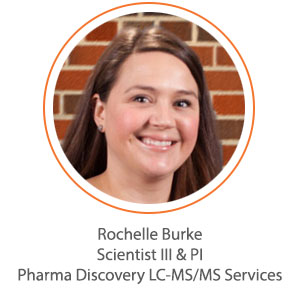A recent trend observed at KCAS is that the bioanalytical needs of our clients’ projects are becoming more complex. There is increasing focus on monitoring delivery of therapeutics to the target of interest. This widens the scope of bioanalytical assays beyond typical plasma or serum methods. We are seeing increasing needs for analysis in tissues and other non-routine matrices, all of which offer their own specific challenges so it is important to be aware of the potential pitfalls associated with each.
This widens the scope of bioanalytical assays beyond typical plasma or serum methods. We are seeing increasing needs for analysis in tissues and other non-routine matrices, all of which offer their own specific challenges so it is important to be aware of the potential pitfalls associated with each.
Although the majority of assays looking at circulatory levels of a therapeutic or biomarker are based on plasma or serum there are times when whole blood is actually the matrix of choice. A good example is cyclosporine which preferentially partitions into the erythrocytes. Mammalian whole blood is more viscous than plasma so it needs more finesse in the lab where the use of positive displacement pipettes is essential for accurate volumes. For whole blood assays using protein precipitation it can sometimes be difficult to get distinct protein pellets leading to downstream interferences.
We consider urine to be a non-routine matrix because it can require extensive method development depending on the analyte in question. Although it would seem to be a simpler matrix than plasma the lack of proteinaceous content in urine can lead to non-specific binding of analytes to any surfaces where the liquid resides. It’s important to assess non-specific binding as early as possible in method development. Addition of surfactants (such as TWEEN or CHAPS) can prevent non-specific binding occurring but this can place the onus for sample treatment on the clinic. Multiple related analytes may behave differently such that different measures are needed to address non-specific binding making the processing even more complex. Another important assessment is whether the surfactant can facilitate the recovery of analyte from sampling vessels post-adsorption so the sample treatment remains in the control of the analytical lab. An additional downside is that surfactants can degrade the performance of the MS system requiring additional deep cleans. They may help with sample integrity but cause problems further downstream adding to the difficulty of urine analysis.
behave differently such that different measures are needed to address non-specific binding making the processing even more complex. Another important assessment is whether the surfactant can facilitate the recovery of analyte from sampling vessels post-adsorption so the sample treatment remains in the control of the analytical lab. An additional downside is that surfactants can degrade the performance of the MS system requiring additional deep cleans. They may help with sample integrity but cause problems further downstream adding to the difficulty of urine analysis.
There are a number of questions to be answered before moving forward with analysis of tissues. For example, how should we handle large organs such as dog’s heart, dog’s lung or pig’s liver. Homogenizing the full organ is feasible but takes a very long time and availability of suitable vessels can be a challenge. Sampling a sub-region makes more practical sense but how can you be sure that sample is representative of the entire organ? KCAS has developed a compromise approach of sampling multiple sections from different regions of the large organ to get a better overall picture.
Calibration standards & QC samples are an integral part of any assay design. For an inexpensive (easy to source) tissue we would prepare calibration standards & QC samples in homogenate from that tissue. We would ideally homogenize blank tissue in multiple tubes and then combine for a larger volume of homogenate for spiking known concentrations. For expensive (hard to source tissue) such as skin our workflow starts with qualification of an assay in plasma to show feasibility. This allows us to take a “surrogate matrix like” approach by dilute skin homogenate 50:50 with plasma. The downside of this approach is that this adds further dilution on top of that from homogenization.
Technology has substantially improved allowing bioanalysis of tissue samples to become more routine. The traditional approach used a single homogenizer with revolving blades to cut through tissue. The challenge with this approach was limiting sample to sample contamination. Successful assays needed a comprehensive rinsing procedure. Tissue processing could be very time consuming but still carry a big risk of contamination.
The Precellys line of tissue homogenizer facilitates parallel processing of up to 24 tissue samples at a time. The system uses ceramic beads to break the samples down for downstream extraction and analysis. Most of our work has used 4-mL or 7-mL tubes where the listed volume indicates the maximum amount that can be used, including the tissue, solvent and beads. This translates to around 4 mL of solvent for a 7-mL tube. For most tissue work the ideal ratio of solvent to tissue is about 6 or 7 to 1. Using an insufficient solvent to tissue ratio yields a homogenate that resembles a thick milkshake type consistency which is difficult to handle in downstream processes. The recent availability of 15-mL tubes further increase the versatility of this approach.
For a non-tissue solid such as feces it is possible to use a smaller liquid volume because it’s not a dense matrix. However, it can present its own challenges post-homogenization. The high fat & oil content of feces makes it a dirty matrix and it can be challenging to develop an extraction procedure to counter matrix effects. For large species feces presents the additional issue that homogenization of the entire sample can be difficult.
Tougher tissues such as heart & skin require further optimization of the preparation process. We have seen little success with directly homogenizing the tissue. Pre-chopping the sample so homogenization is based on smaller pieces greatly increases the likelihood of producing a uniform homogenate. Although there are concerns about possible adsorption to surfaces such as scalpel blades the benefits of this approach far outweigh the risk of potential losses.
KCAS also has experience with hard tissues such as toenails. The ideal approach is digestion with base to dissolve the nail and isolate the therapeutic in solvent for further processing.
KCAS is steadily building a team with in-depth experience of dealing with a broad range of tissues and other non-routine matrices. We are happy to apply that knowledge in support of your projects where tissue analysis may be applicable.

